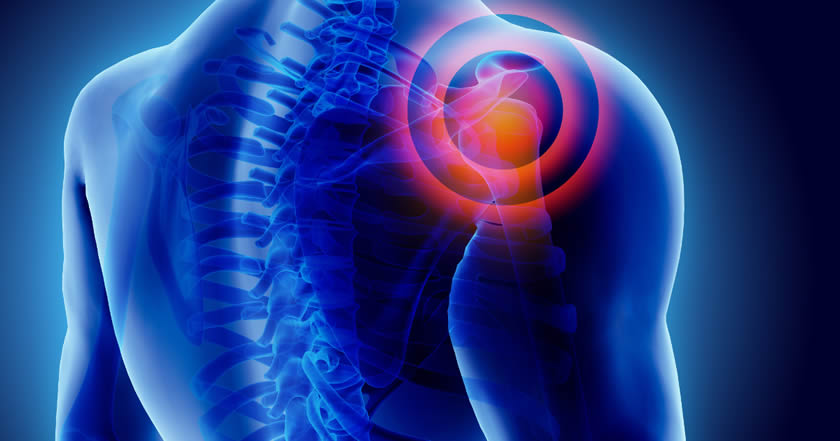
1. Cervical Spine (Neck) Mobility
The Neck and the Shoulder complex are intimately related due to their joint proximity as well as the number of muscles that attached to both the shoulder complex and cervical spines, such as the upper trapezius and SCM (sternocleidomastoid). If these muscles become restricted at their cervical attachment, this can put a significant strain on the shoulder and restrict motion. Individuals with poor mobility in their necks have a tendency to compensate for neck motion with shoulder motion, leading to overuse and unnecessary muscle tension and adhesion development.
2. Thoracic (Upper Back) Extension
In order for the shoulder to be able to express its full range of motion, the thoracic spine (upper back) but be able to extend in order to create an environment for the shoulder to work properly. If the thoracic spine does not extend and you are performing a task that requires the shoulder to lift overhead, you will be forced to compensate through lumbar (lower back) extension as well as put excessive strain on your glenohumeral joint (shoulder). Because of the intimate relationship between the scapulothoracic joint and the shoulder, a poorly moving upper back will lead to poor shoulder blade movement and ultimately will impact the entire shoulder.
3. Proper Diaphragm Function
Of all of the requisites on this list, this one may the one that is hardest to connect to the shoulder. Most individuals think of the diaphragm as an involuntary muscle associated with breathing and abdomen, how could it be related to the shoulder? A strong case could be made that in order for any joint, particularly the spinal joints, shoulder, and hip, that the diaphragm respiratory and stability system must first be intact to express proper movement. This concept of “proximal stability for distal mobility” starts with core stability and proper diaphragm function. By using the diaphragm to produce intra-abdominal pressure, you are able to lay down a strong foundation for your shoulders to move off of.
4. Shoulder Blade (Scapula) Movement
The glenohumeral joint or the shoulder cannot be talked about without also mentioning the shoulder blade. The humerus and the scapula work very intimately together to produce movement in the shoulder joint which is the meaning of the nerve” Scapulo-humeral rhythm” The shoulder relies on the shoulder blade to slide and glide for all motions of the shoulder. Even if you have a very strong and mobile shoulder if your shoulder blade does not do its part in moving and stabilizing the shoulder, you will not be able to move effectively. Be sure that when you are training and mobilizing your shoulder that you don’t neglect its partner in crime… The scapula!
5. Adequate Joint Centration
The shoulder joint itself is a “ball in socket” joint meaning that the humerus has a round end that fits into the glenoid fossa which is a carved out socket for the shoulder. While this type of joint is able to express a large amount of range of motion, all of this freedom comes at a cost… instability. There are numerous muscles, ligaments, tendons, and other soft tissues that are required to work in sync in order for the shoulder to move properly and safely. The function of these tissues is not only to move the shoulder but also to center the shoulder in the glenoid fossa. When the shoulder sits nice and snug into the capsule, it is most able to express its full range of motion and significantly decreases the likelihood of a soft tissue injury related to the shoulder. Joint centration can be best trained through carries, get-ups, and plank variations.
6. Rotator Cuff Activation
When most individuals think of shoulder health, they think of the rotator cuff. This muscle group is made up of four muscles; the supraspinatus, infraspinatus, teres minor, and subscapularis. These muscles have two primary roles, shoulder movement, and shoulder stability. These four muscles play a significant role in shoulder joint centration (see #5) by stabilizing the head of the humerus in the joint during motion. If an individual does have good control and strength in the rotator cuff, they will more likely to use large muscles such as the Latissimus Dorsi and Pectoralis Major. Not only are these large muscles no designed to be stabilizers for the shoulder, but if too much is asked of them (primary movers and secondary stabilizers), these muscles can be more prone to injury and long term overuse.
7. Full Range of Motion
As you can see from the prior 6 key factors to shoulder health, there are many joints and muscles that all act in synergy with the shoulder to ultimately lead to healthy and functional movement of the shoulder. Of course, improving your range of motion in the shoulder itself should be a priority. Regular stretching and mobilization of the shoulder is an important piece of shoulder health. If the thoracic spine, shoulder blade, and stability are all working properly, but the shoulder itself does not move well, then you will be limited functionally. Work on your shoulder range of motion regularly through controlled articular rotation and end range training. The shoulder is one of the most unique, complicated, and impressive joints in the body, treat it well and it will give you an abundance of movement options!
If you are currently dealing with any shoulder pain, discomfort, or want to improve your shoulder health long term, give us a call!
Call Us
schedule appointment nowschedule appointment now


